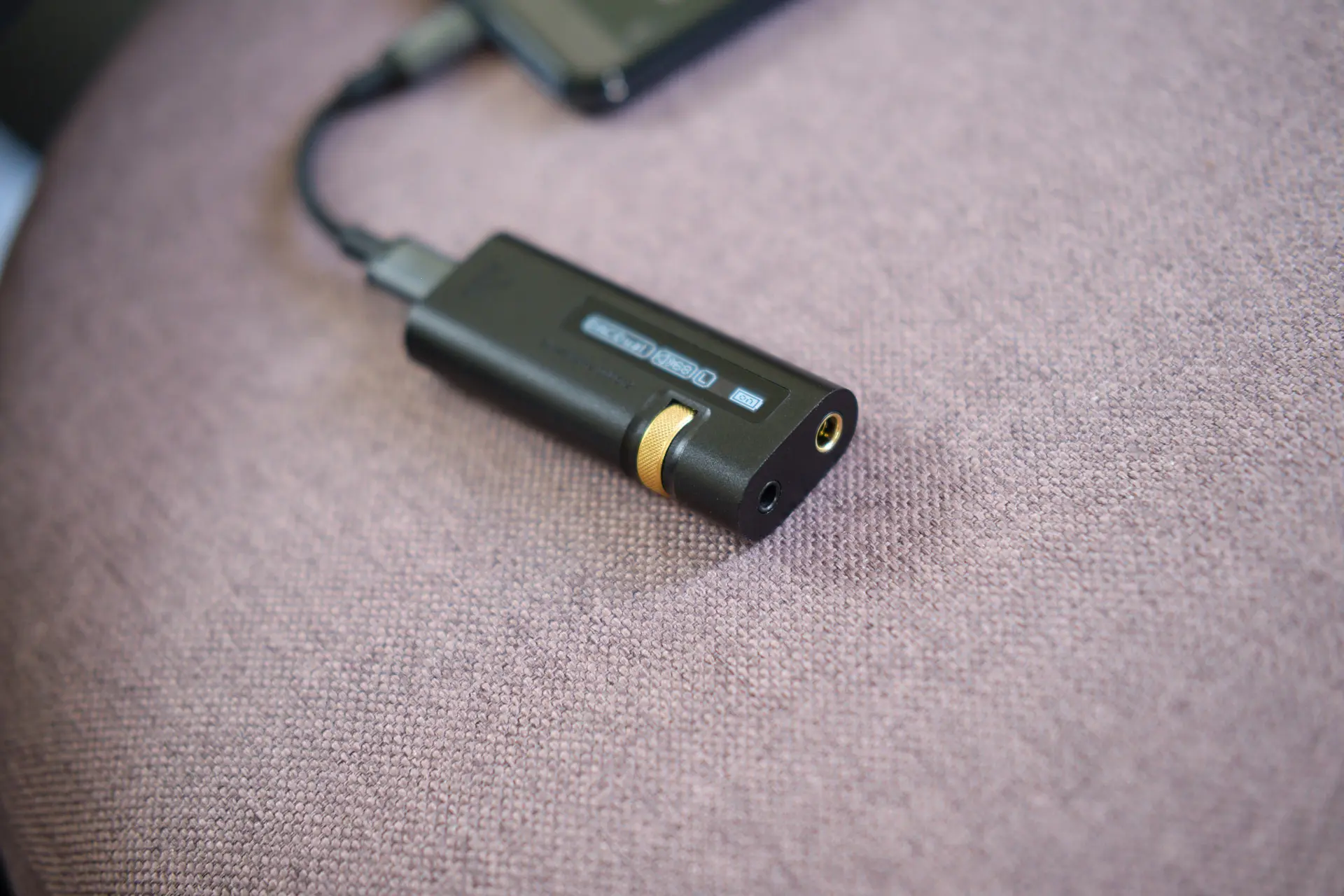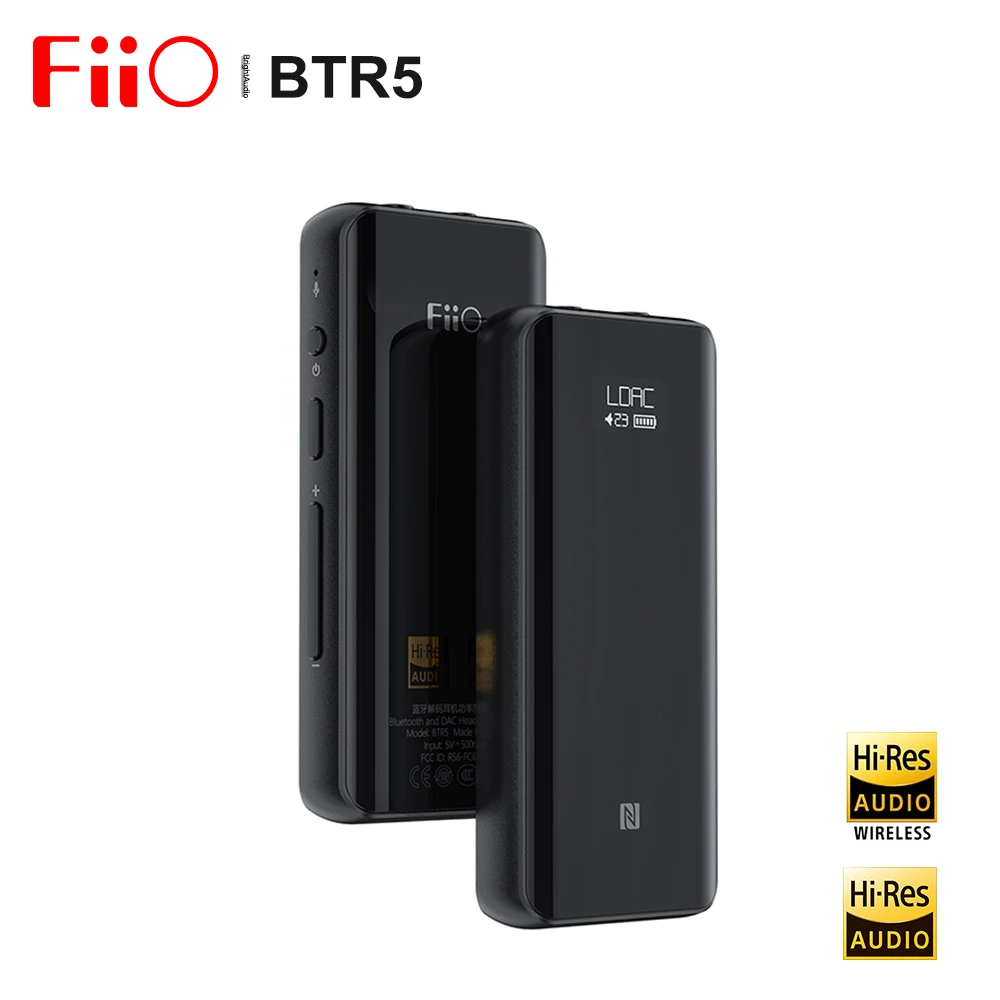I’ll start by admitting that Shanling was simply never on my radar and I would have probably completely missed UA5 if not for the viewers asking about its review all the time. That would have been my loss but also the loss of the readers that might have never considered UA5 too. So please let me right that wrong by introducing one of the finest DAC dongles that I ever had in my possession.
Features
A quick look over the Shanling UA5 reveals that this is a dongle DAC with a small OLED. The display is used for some basic info such as volume level, browsing through menus, and choosing among several different modes of operation. Yes, the usual low and high gain modes are present, but there are a few more interesting things to be found here too. The first among them is choosing if you want to use a single DAC or dual DAC operation. The first one saves battery, while the second one slightly improves the sound fidelity, the choice is yours and the difference is subtle to my ears. This next option is what I really found interesting. Inside the DAC there is a small 220 mAh battery. This capacity is small enough to make this DAC appear like any other battery-less dongle, but then again not big enough to have a meaningful capacity if used in a traditional way – to power the whole device. That’s where the innovation kicks in. The battery will power the analog output section of the device, the one that’s most critical for the sound quality, while the whole digital and processing section will be USB-powered. This way, even such a small battery can provide up to 8 hours of operation. But there’s more, once it is depleted, UA5 can switch to being a completely USB-powered device. Sound fidelity takes a hit this way but it’s better to have more modest sound fidelity than not to have any music at all. This is, in my humble opinion, a great way of having the best from both designs. Now, I’m not saying that Shanling invented this, but I personally haven’t had a chance to use a DAC with this type of power distribution.
One USB-C input is very common for this kind of device, and so is the selection of two outputs. One is single-ended 3.5 mm and the other is balanced 4.4 mm, also known as Pentaconn. Shanling UA5 is a truly balanced design, so if you can utilize that output, I strongly recommend you do it (even if that means you have to invest in the new set of cables for your headphones).
If you’re into internals, you might be interested to know that UA5 is based around two Sabre ES9038Q2M DAC chips. The amplification part of the device uses Ricore RE6863 Amplification chip that’ll provide up to 211 mW of power in the best-case scenario which is balanced output looking into 32 Ohm headphones.

Use case
As long as you set realistic expectations for a small portable dongle regarding the power and drive it can provide to your headphones, the amplification section will be good enough to pass the sound fidelity achieved by the DAC section. Ideally, you want to use sensitive IEM models, but UA5 will be happy enough with any bigger headphones of decent sensitivity, giving just a fraction of dynamics, and drive that would come naturally to bigger and more powerful amps. So be realistic about what this device is meant to do and that it’s not meant to drive high impedance power hogs, and you shall not be disappointed. Once we have that out of the way we can talk sound.
Sound
I will tackle the overall sound of Shangling UA5 in one take because the impression doesn’t change much if you use it as a DAC only or connected directly to some sort of headphones as long as you keep to the advice given in the section above.
Shanling UA5 sounds mostly neutral and well-balanced. But why do I use that ominous “mostly” then? Worry not, because to my ears UA5’s way of detouring from neutrality is by giving you a slightly fuller and rounder bassline than I feel is neutral in absolute terms. You might also call this bassline a touch warmer in tonality. However you call it, the fact is that this is done modestly and not in any sort of tacky and too obvious way. In my experience, most listeners actually prefer this to the monitor-accurate kind of bass that’s fast and grippy but doesn’t “warm your heart”. Luckily, that warmth is done in moderation here and it doesn’t negatively influence the sense of rhythm and pace, nor does it spill into the midrange in a way that would spoil its neutrality. The midrange is actually very clean and precise, but also rich with details in a way that never feels sharp or analytical. Listening to various music genres I actually got a feeling that UA5 strikes an almost perfect balance between being revealing and doing it in a very natural and organic way. The same is completely true when talking about the highest spectrum. Details are there, a good sense of air is there, pin-pointy nature of placing instruments inside of the soundstage is there… but then again, UA5 simply never sounds analytical or sharp in any way. The resolution, layering, and instrument placement simply come naturally.
So soundstaging and layering are top-notch, but what about the dynamics you ask? Well, that’s really good too. There’s a sense of liveliness and agility that many dongles can’t match, even if the price puts them in a nominally higher tier. Yes, some of them do sound punchier and kickier, but that usually comes at a cost of having bigger batteries and noticeably higher price tags. Here around 200, and all the way up to 400, I have yet to find anything that’ll outpace this one.
Comparison
Moondrop Moonriver 2 is the only DAC I’ll be comparing UA5 with because it is the only worthy competitor at this price point really. If you want to know about more devices, just click on the Moonriver 2 link and see how it compares with other devices (I compared it with quite a few of them) then return here and see how UA5 compares to Moonriver 2 and you should have a clear picture of what’s what.

Moondrop Moonrvier 2 doesn’t have a battery and it’s completely USB power dependant. If you compare Shanling UA5 with it in equal terms, using USB power only, you’ll probably have a difficult time differentiating them. Well, you’ll probably notice that UA5 sounds a touch warmer in the bassline, whereas Moonriver 2 is slightly leaner but more grippy. But once you switch to using UA5’s battery for powering the output section, it takes a lead in terms of overall clarity. Even the bassline starts to sound weightier and more impactful while layering and pinpointing are more pronounced. To put it simply, the battery-powered output makes the UA5 the best-sounding portable DAC I have tested here on this website.
One thing that still goes in favor of Moonriver 2 is that it’s still slightly more compact and lighter. The difference is not big but it’s there and I have to admit that I still use both of these in equal measure. UA5 when I want the best portable sound, and Moonriver 2 when lightness in my pocket is a more important trait (let’s say while jogging for example so we can pretend I jog).
Conclusion
There are so many similar products on the market now that, as I have said in the beginning, I’ve almost overlooked Shanling as a brand completely. I am so glad I haven’t because this is truly a well-built device that functions and sounds great. As of now, this is an affordable portable DAC to beat. iiWi Score should tell how I feel about it… until anything that can lower it appears on the market.
| SHANLING UA5 – CHARACTERISTICS |
|
DAC chip: Dual ESS ES9038Q2M
|





Thanks for the great article!
Hi, thanks for this exceptional review. But i was just curious, if i ever to try, will i experience the same sound quality if i use its headphone out as a “line out” and connect it to my integrated amp and speakers? Thank you